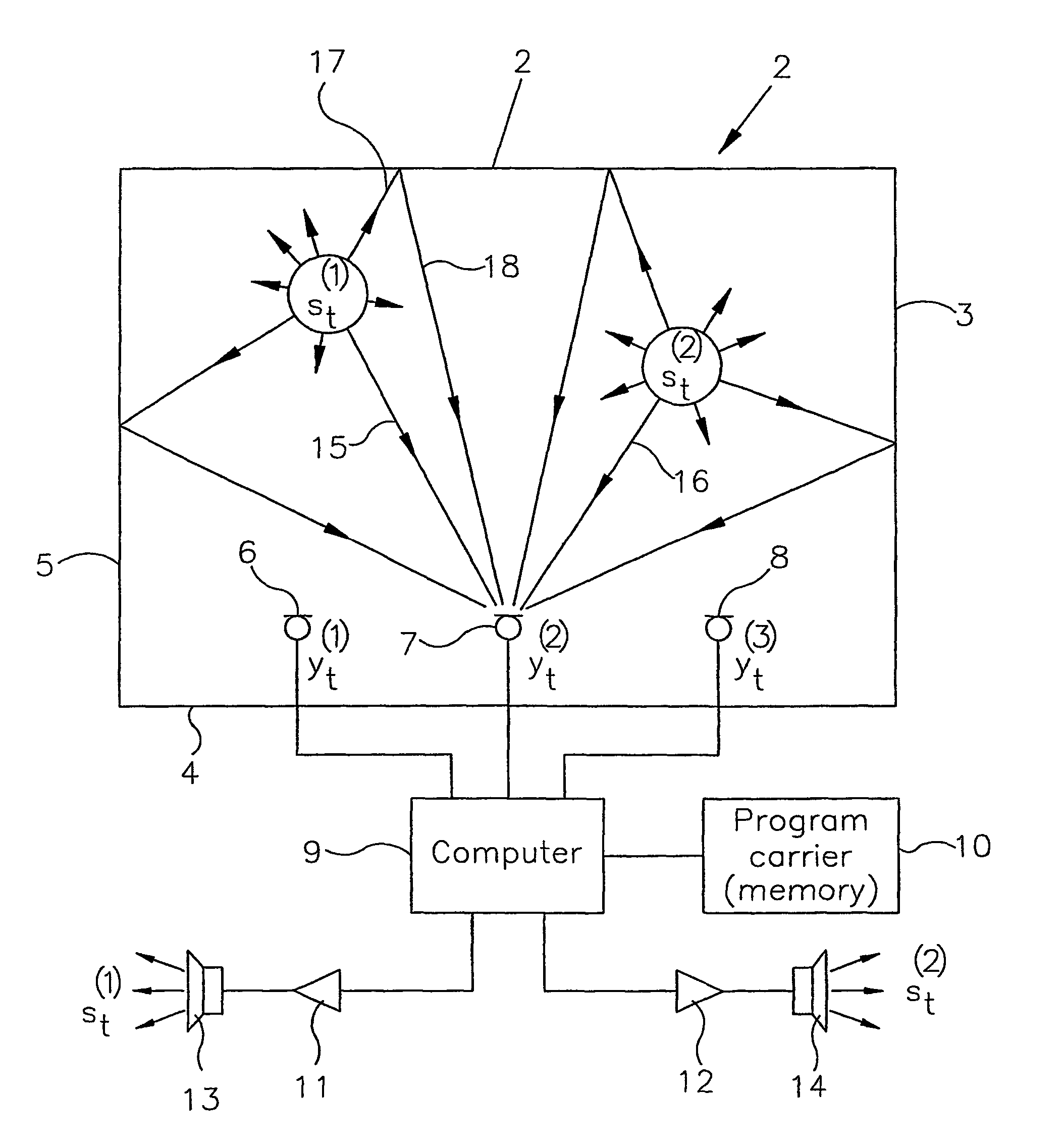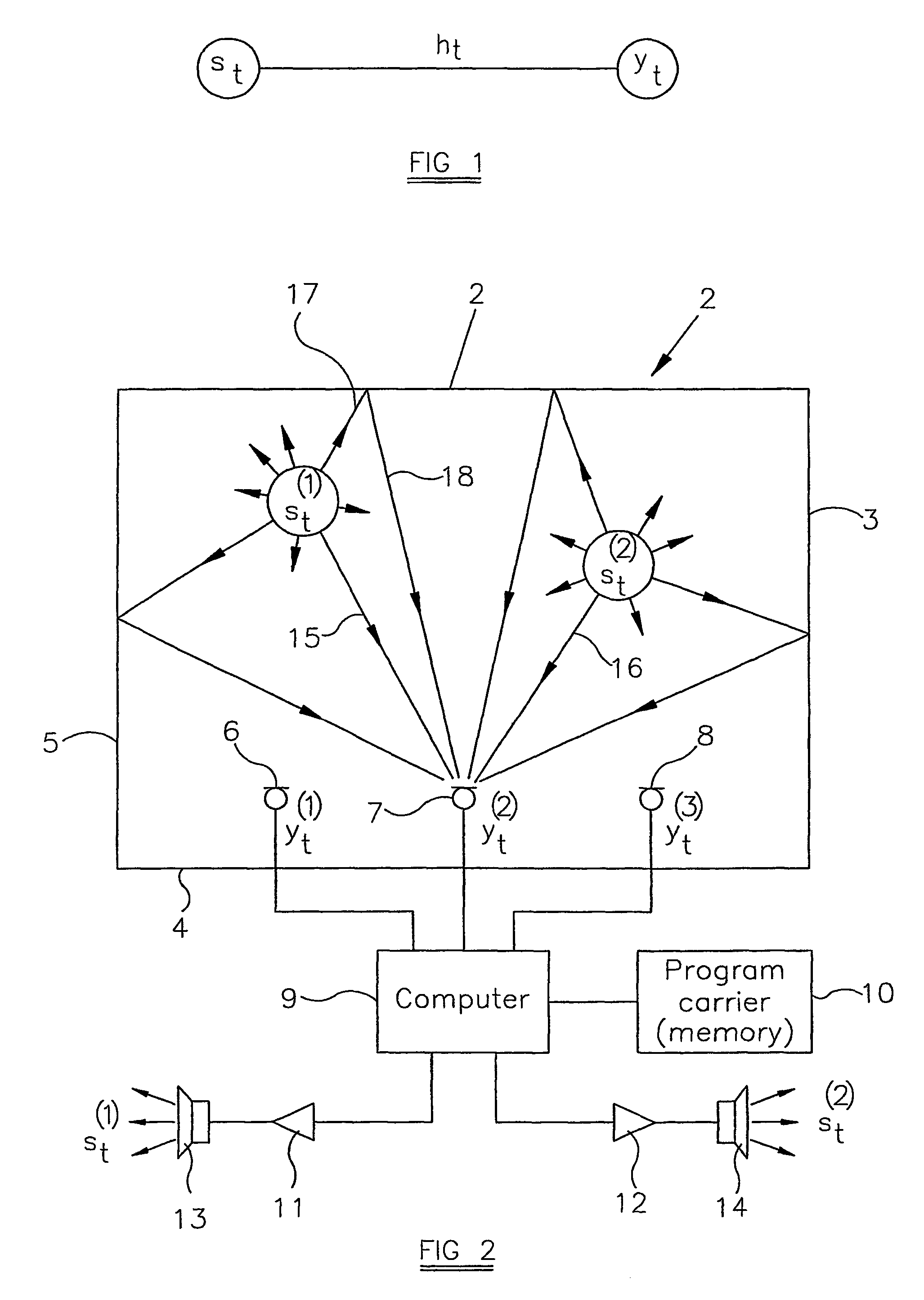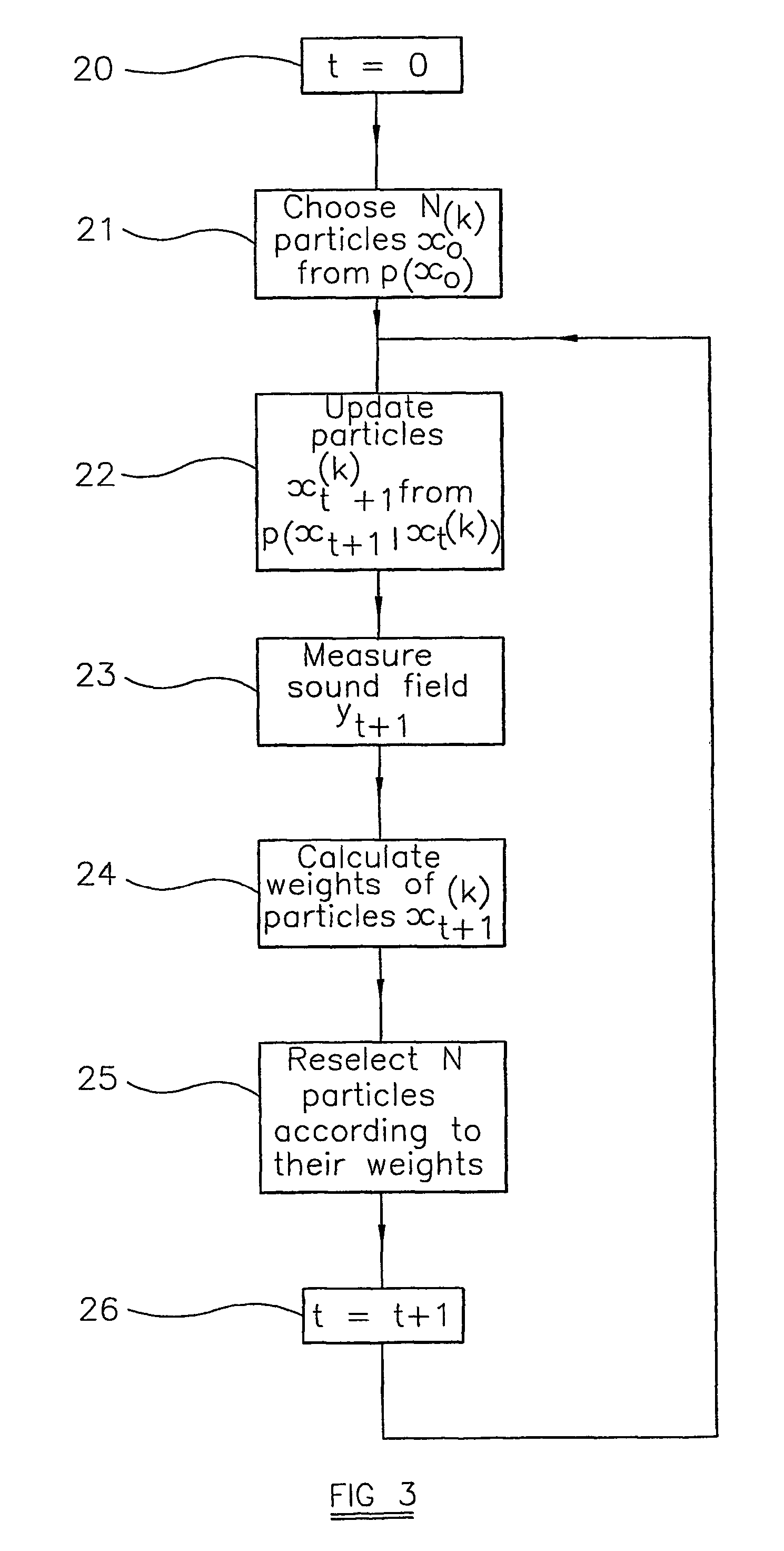Method for extracting a signal
a signal and signal extraction technology, applied in the field of signal extraction, can solve the problems of signal contamination, noise pollution, and limited technique to modelling sources with fixed parameters
- Summary
- Abstract
- Description
- Claims
- Application Information
AI Technical Summary
Benefits of technology
Problems solved by technology
Method used
Image
Examples
Embodiment Construction
[0035]In order to extract a desired signal, a parametric approach is used in which the data are assumed to be generated by an underlying unobserved process described at time t with the variable xt. The variable xt contains information concerning the waveforms of the different sources. The problem of extracting a desired signal may be too complex for a good deterministic model to be available, as little is known concerning the real structure of the problem. Alternatively, if a good deterministic model is available, this may lead to a large set of intractable equations.
[0036]The models for the way sound is generated give expressions for the likely distribution of the current ‘state’ xt given the value of the state at the previous time step xt−1. This probability distribution (known as the state transition distribution, or ‘prior’) is written as p(xt|xt−1). How the current observed data depend on the current state is specified through another probability distribution p(yt|xt) (known as...
PUM
 Login to View More
Login to View More Abstract
Description
Claims
Application Information
 Login to View More
Login to View More - R&D
- Intellectual Property
- Life Sciences
- Materials
- Tech Scout
- Unparalleled Data Quality
- Higher Quality Content
- 60% Fewer Hallucinations
Browse by: Latest US Patents, China's latest patents, Technical Efficacy Thesaurus, Application Domain, Technology Topic, Popular Technical Reports.
© 2025 PatSnap. All rights reserved.Legal|Privacy policy|Modern Slavery Act Transparency Statement|Sitemap|About US| Contact US: help@patsnap.com



